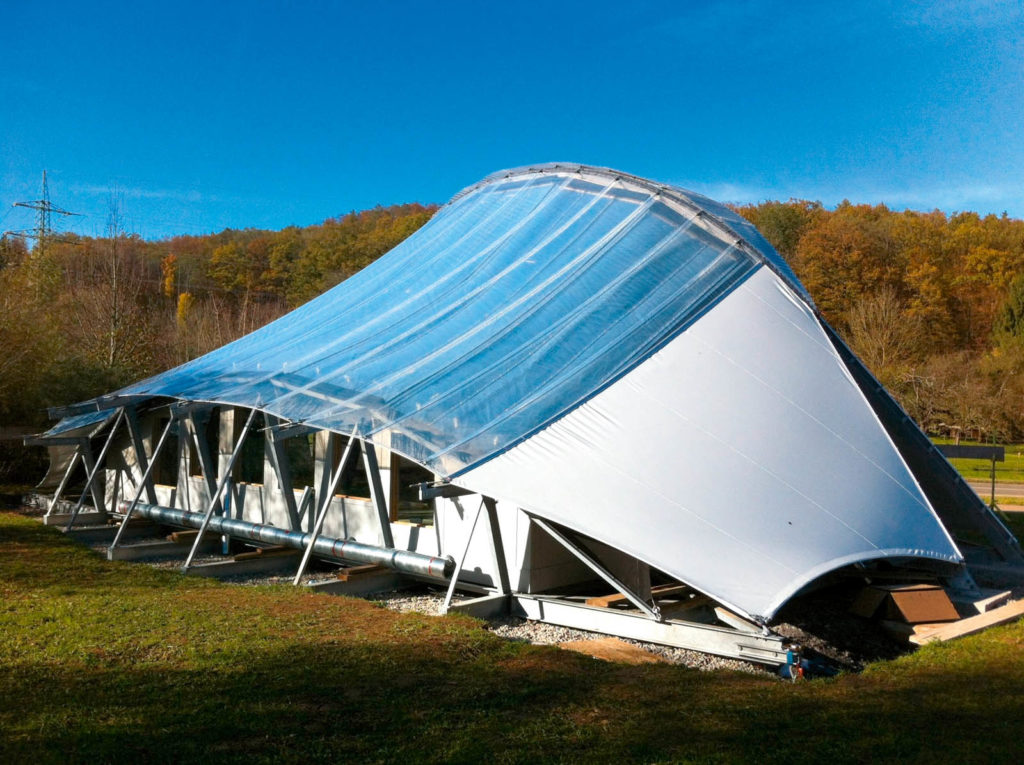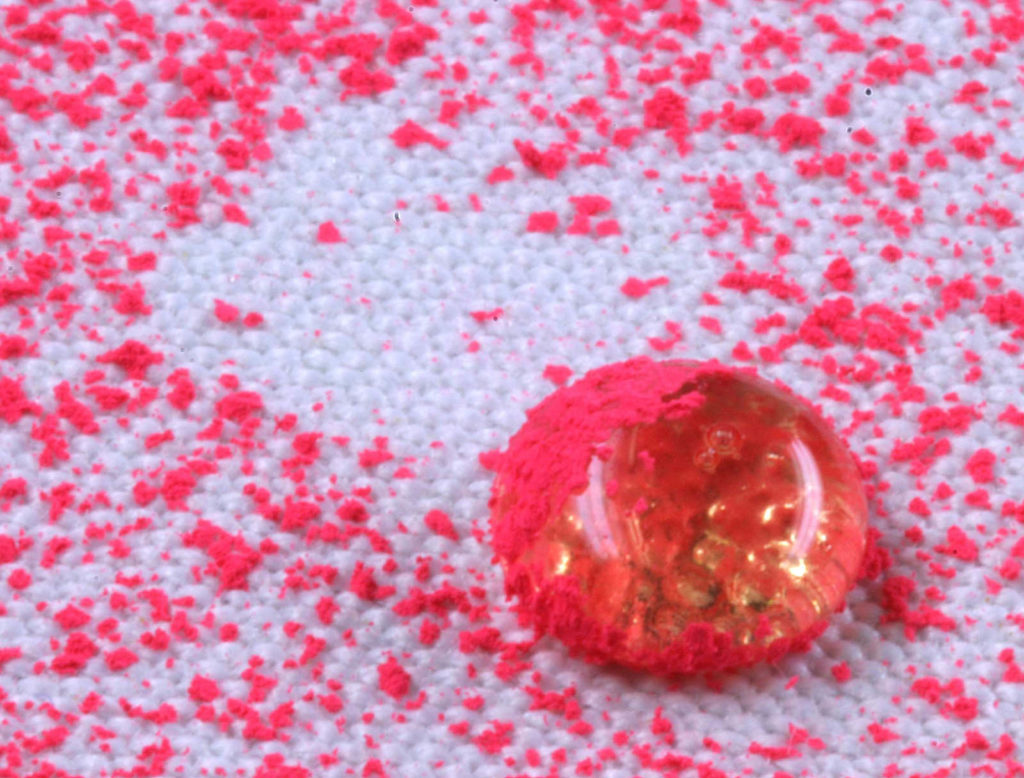Virtual Expo 2020 advanced textiles education notes industry progress and new opportunities.
by Janet Preus
The Industrial Fabrics Association International (IFAI) opened the advanced textiles education sessions of Virtual Expo 2020 with topics designed to support the successful research, development and commercialization of new, advanced textile technologies and products.
The first session was presented by Dr. Sasha Stolyarov, CEO, Advanced Functional Fabrics of America (AFFOA). His topic, “The Development of Advanced Functional Fibers and Fabrics,” outlined the progress made in AFFOA’s mission to “rekindle the domestic textiles industry” with its coordinated research, development and commercialization support.

Stolyarov says the vision is “to transform what a fiber and a fabric is,” so fibers become functional fiber microsystems that can be engineered for an array of functionalities and in multiple markets. “We’re talking about a whole new industry, a whole new set of skills,” he said.
In order to do that, it will take a collaborative effort. AFFOA has key roles in this endeavor, he said, that start with transforming traditional fiber, yarns and textiles into what is, essentially, entirely new products that are highly sophisticated, integrated and networked systems. A traditional fiber is a single material with no architecture and a single functionality; a functional fiber microsystem can be multimaterial, multifunctional and created with a device architecture.
This will require a new domestic supply chain, as well, one that can be relied upon long-term and with rapid-response capabilities. “It takes a whole ecosystem to do this,” he said, requiring close collaboration among government, academic and industry participants. “One of the things you can do, then, is respond to a crisis,” he said, such as the one created by the pandemic.
The third part of this effort is “inspiring, educating and training students and workers for the future,” he said. “A skilled workforce is going to be instrumental.”

From prototype to commercialization
Justine Decaens spoke on the topic, “Smart Textiles: From Lab Prototypes to Commercial Products.” Decaens is R&D director with CTT Group, a testing laboratory and R&D facility specializing in technical textiles and headquartered in Quebec, Canada.
The world market for smart textiles is projected by marketsandmarkets to reach $9.3 billion by 2024, a 35 percent increase since 2015. In the past, sports applications led the market, but that has changed, with medical and wellness products now taking 40 percent of the total share.
Decaens explained that there are three main technologies used: conductive textiles, such as for power transmission or heating; textile sensors, used in biomonitoring and monitoring environmental conditions or physical activity; and textile actuators, such as phase change materials, shape memory polymers and energy harvesters.
The approaches for making a textile “intelligent” vary, mainly either using conductive ink on a textile substrate or using the textile itself as a conductor with the integration of conductive yarns. There are advantages and disadvantages in each approach, depending on what is needed in the functionality of an end product.
The expense of producing smart products is, in any scenario, still a challenge. “Eighty percent of the cost is from labor, and 20 percent of cost is material, so the goal is to reduce the manual labor,” she said.
The best way to succeed in this market is to use a “market back” approach. “This means that you look at what the need is and then build your product for that need, which produces a much higher success rate,” she said.
The one-on-one R&D partnership
The process of working with a research and development center was discussed in Dr. Thomas Stegmaier’s presentation, “Testing and Standards Integral to Timely Product Development.” Dr. Stegmaier is head of Competence Center Textile Chemistry, Environment, Energy, with DITF [Deutsche Institute Fur Textil Und Faserforschung Denkendorf], a large, textile research center located in Germany. It partners individually with industry participants to develop new technologies and products.
Stegmaier chose four specific projects that DITF had undertaken to solve very different problems. The first project set out to construct a more effective sensorical yarn by wrapping capacitive yarn around a traditional yarn. This allows for greater flexibility in the fabric, as well as the end product.
The product was tested in a project that sought to address humidity and mold control in buildings. “It’s a complex problem” he said—one that requires inexpensive systems where insulation of an existing building is not possible. They now believe that they can develop a humidity sensory textile that could impact the humidity in buildings. “That is a great step forward,” he said.
Another project sought to create a safer collaboration between human workers and robots. A sensory mat was developed that can prevent accidents with human workers by slowing and even stopping the robot mechanism. Something as relatively simple as a pressure sensor mat on the floor can still be difficult to design, because “safe in terms of standards is an enormous challenge,” he said.
The study of polar bear hair guided a project to construct a “polar bear pavilion” to learn how the bears absorb light and turn it into heat, with the only heat loss via the animal’s eyes, mouth and nose. Mimicking the bear, the building was designed with an outer layer, an absorbing layer and inner insulation, and—just like the polar bear—the Pavilion was also successful in storing energy it collected for very long periods of time.

Additionally, a study was successful in recreating superhydrophic surfaces for awning textiles, inspired by nature’s lotus leaf. Self-cleaning functionalities were accomplished with different kinds of finishings. German manufacturer Schmitz Textiles has demonstrated that its Nano Clean, for example, maintains self-cleaning functionality for five years. “That’s really quite amazing,” he said.
MAS, a company headquartered in Sri Lanka, sought to create a new fabric for swimsuits and active wear. The resulting product is now in the process of being patented.
Janet Preus is senior editor of Advanced Textiles Source. She can be reached at jlpreus@ifai.com
 TEXTILES.ORG
TEXTILES.ORG


